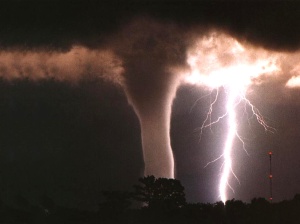
It is that time of the year when there is a proliferation of outdoor events. So what areas of OH&S should we be looking at. There are some more inherent risks associated with outdoor events and concerts. So we need to be more aware and alert during this period. There are more factors that can cause problems. So what are the obvious ones?
Well the event is outdoors so one of the key factors is the weather. This is the one variable that we cannot control. We can protect against sone elements but mother nature can soon change how an event will happen. You have to be concerned about wind, rain and the sun. So for each production there has to be a point at which the event could be jeopardised by the weather, and it is at this point the decision to cancel or postpone an event has to be made. now this decision should be made by the production manager in consultation with the authorities and the venue manager or owner. The safety of all of those involved is paramount. If people that are working on the event are covered by an award or enterprise agreement and these cover weather conditions, these also have to be adhered to.
Lets look at some aspects of weather in relation to an outdoor event.
Temperature Extremes
Hot Days
The risk of heat stroke must be thought about. Dehydration is also a problem. Plenty of water and shade shouild always be available to people. If the performers need to wear costumes that have little ability to breathe or ventilate , this has to be taken in to consideration.
Cold Days
Again you need to provide appropriate facilities for people in these conditions. Shelter, protective clothing.
The risk assessment shall address control measures that may include rescheduling the performance or event to a different time of day, access to water, shade, fans, heaters, air conditioning, rest facilities.
Winds
High or gusting winds can create stress on portable or overhead structures such as lighting towers and other temporary structures. The risk assessment shall take into account potential hazards prior to commencement of construction and set out on-going risk assessment monitoring procedures that shall continue until such structures are dismantled. If forecast information indicates the likelihood of high or gusting wind, the production manager, in consultation with the venue owner/manager, shall assess whether the production needs to be postponed or cancelled and whether temporary structures need to be dismantled. Control measures must also be implemented in respect of securing any objects, including seating, fencing and stacked materials, that may potentially be blown over or otherwise moved by wind.
Lightning
In conditions of lightning or if lightning is forecast, special precautions must be made in relation to communication and lighting systems. Such precautions shall be set out in the Risk Assessment including the need for ongoing monitoring of weather conditions, the point at which lighting and communications systems should be disconnected and/or dismantled and/or the production/event postponed/cancelled.
Wet Weather
Slipping hazards are greatly increased in wet weather due to damp surfaces and reduced visibility. Electrical equipment and lighting established in areas exposed to weather present potential hazards. They must be protected to ensure electrical current does not come in contact with water. Residual current devices must be used at all times. In fact it is a good idea to plan for wet weather anyway. It is not only rain that can cause problems but sprinkler systems etc. can also play havoc with electrical. If the weather is also hot, some promoters will spray the audience with water this also needs to be taken into account.
Wet weather gear should be provided for work in rain. In heavy rain, consideration needs to be given to abandonment and/or the provision of sheltered space.
Tides and Floods
If a production or event is sited near water, the risk assessment shall take account of the possible impact of tidal activity and/or flooding.
Exposure to Sun
Consideration of sun exposure hazards shall have regard to the type of work undertaken, available shade, reflection, time of day/year, geographic location, access to fluids, altitude and PPE. Also equipment left in the sun can become extremely hot to handle and could also lead to injury.
Where sun/heat protection is required, appropriate clothing that covers the body and limbs, hats and sunscreen (Factor 15) and sunglasses shall be worn and fluids must be easily accessible. Appropriate PPE must be provided by the producing company.
Particular attention shall be paid to sun protection between 11 am and 3 pm.
As you can see that these considerations are a bit more complex due the mother nature and are not likely to be applicable to indoor events. In fact if you are doing a moderately sized outdoor event it might be a good idea to have a back up venue available in case of cancellation.